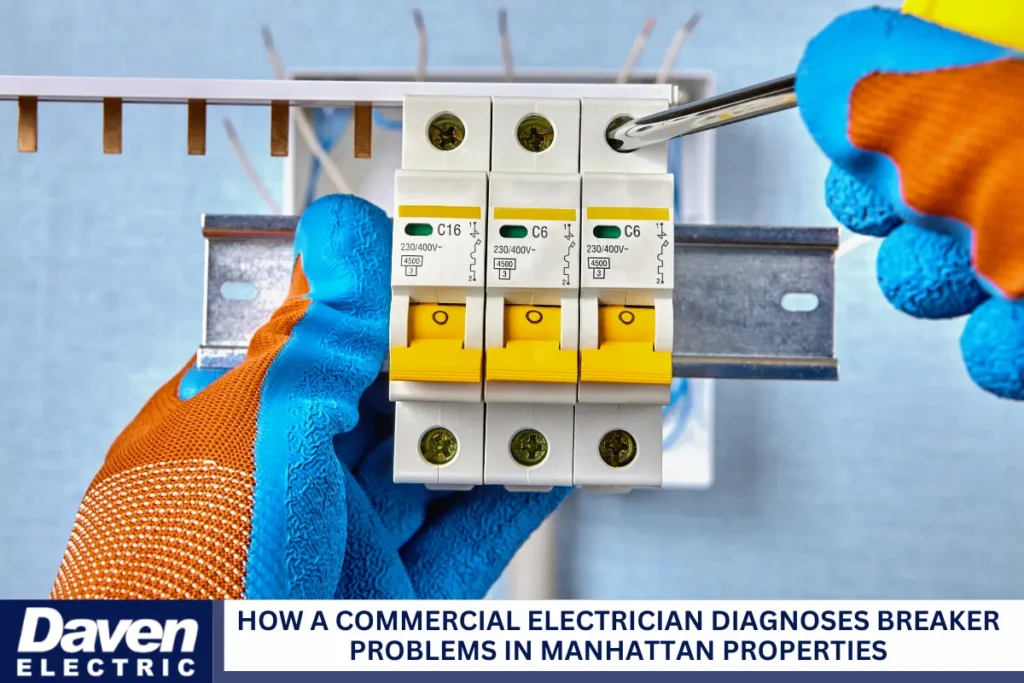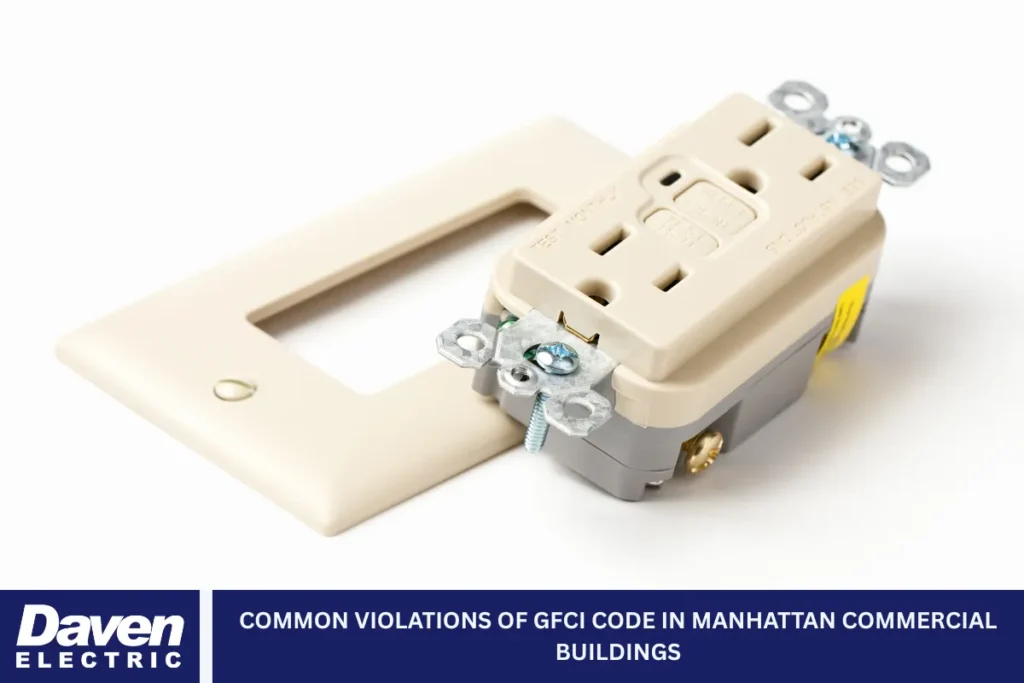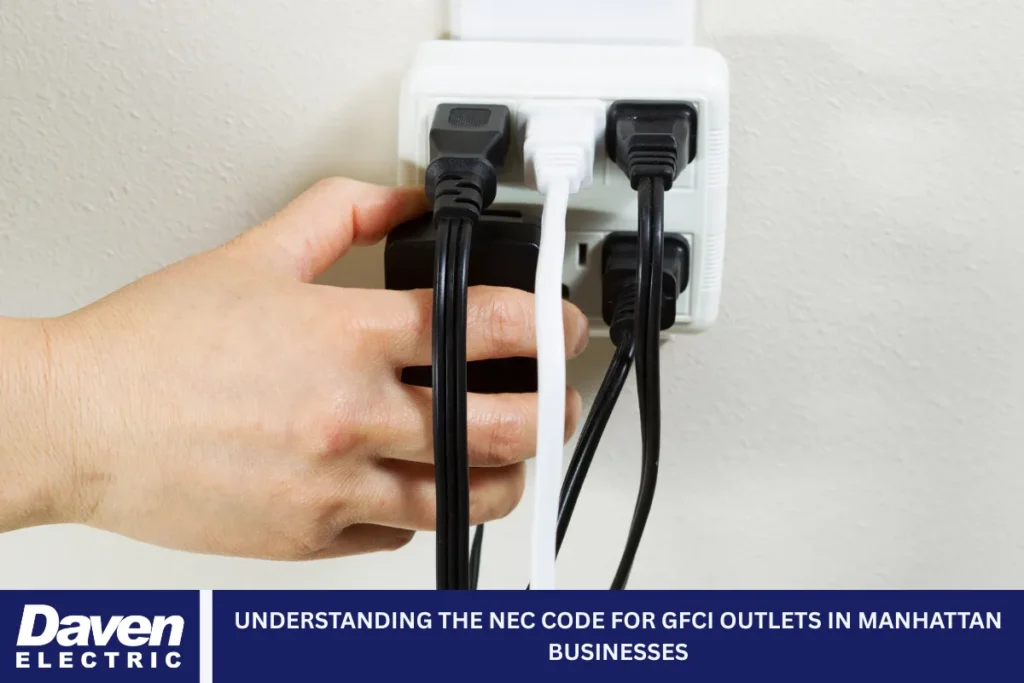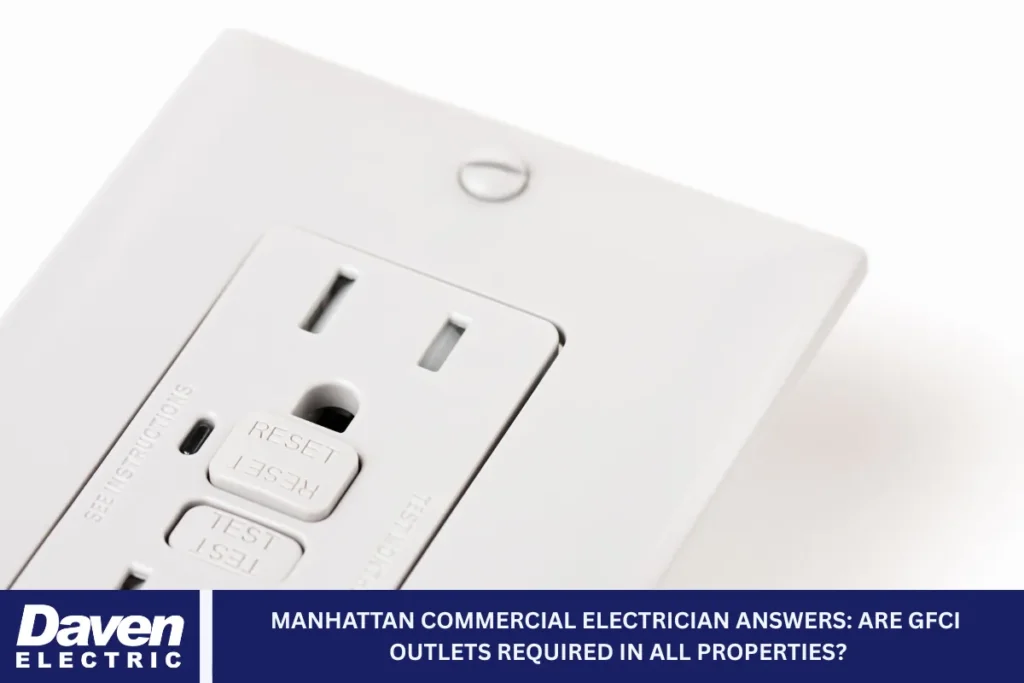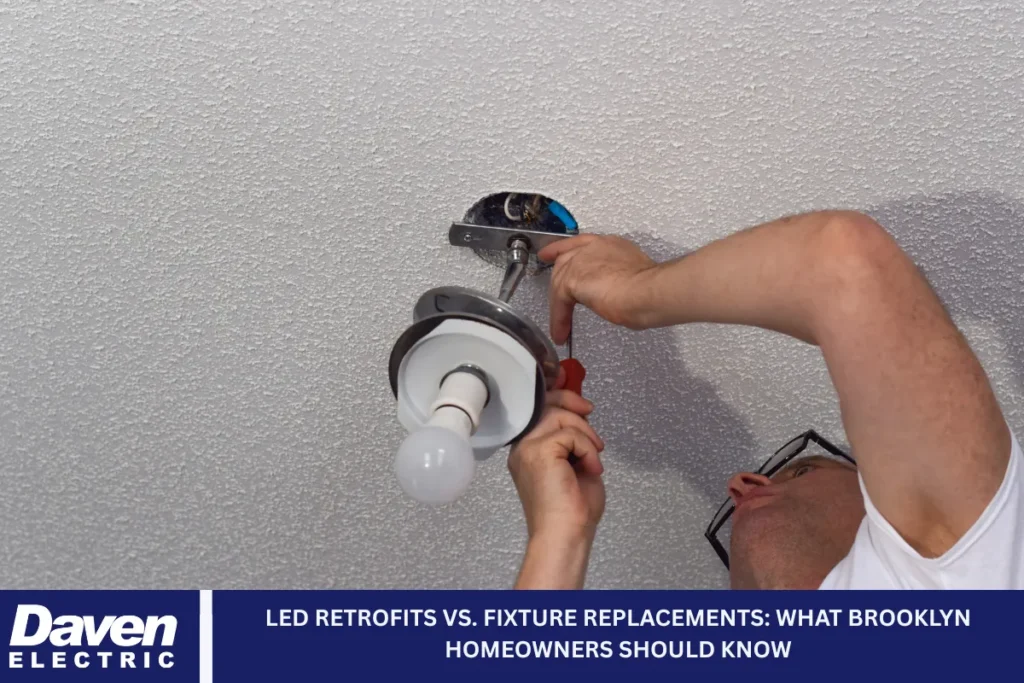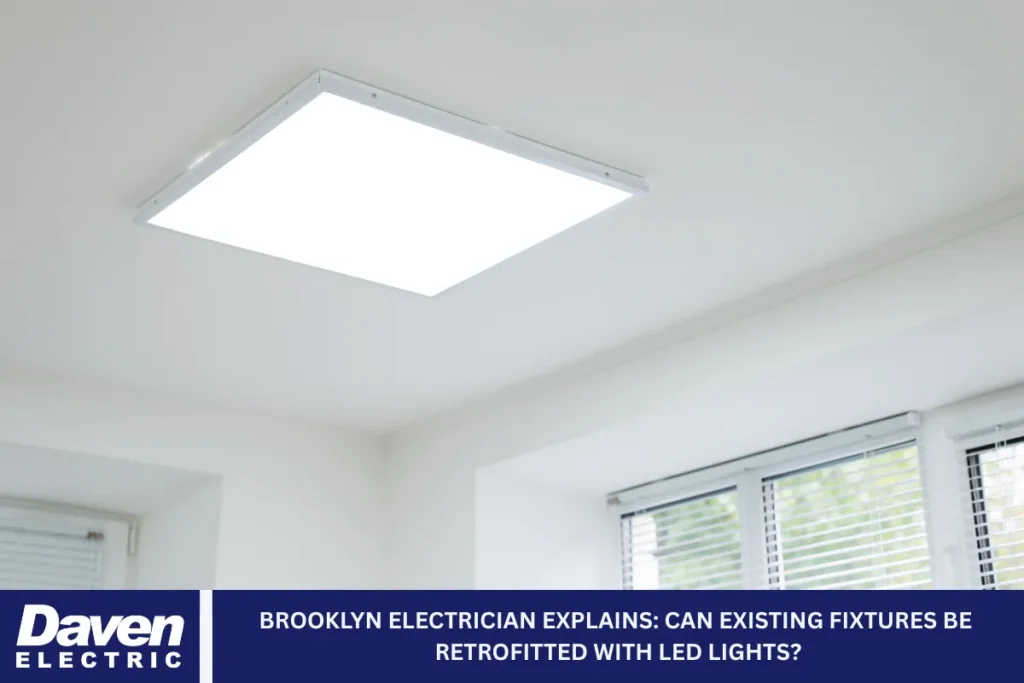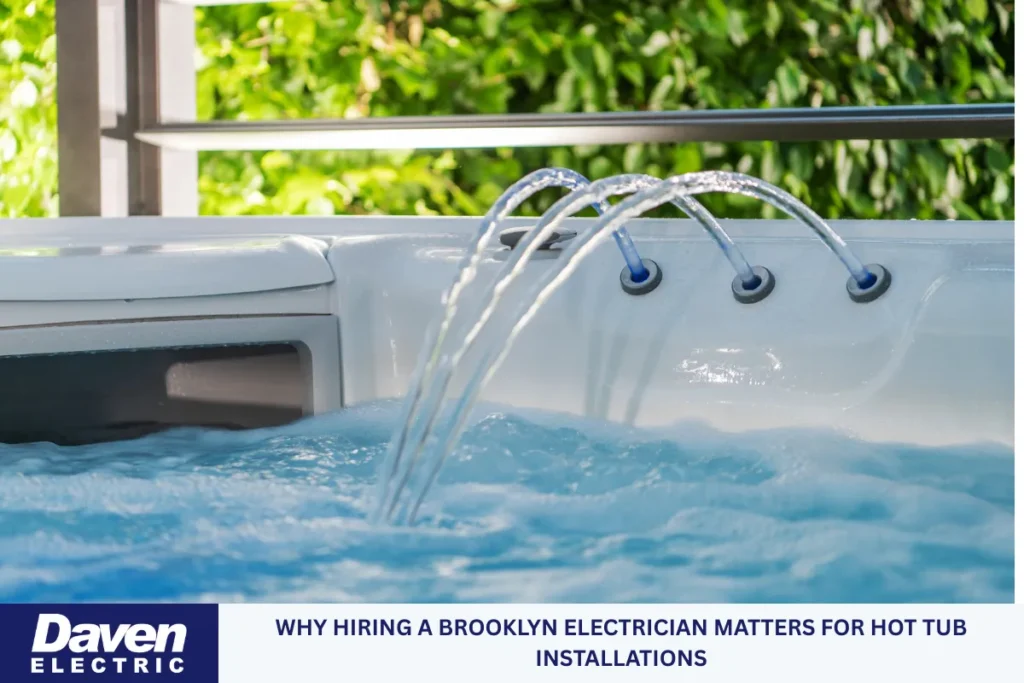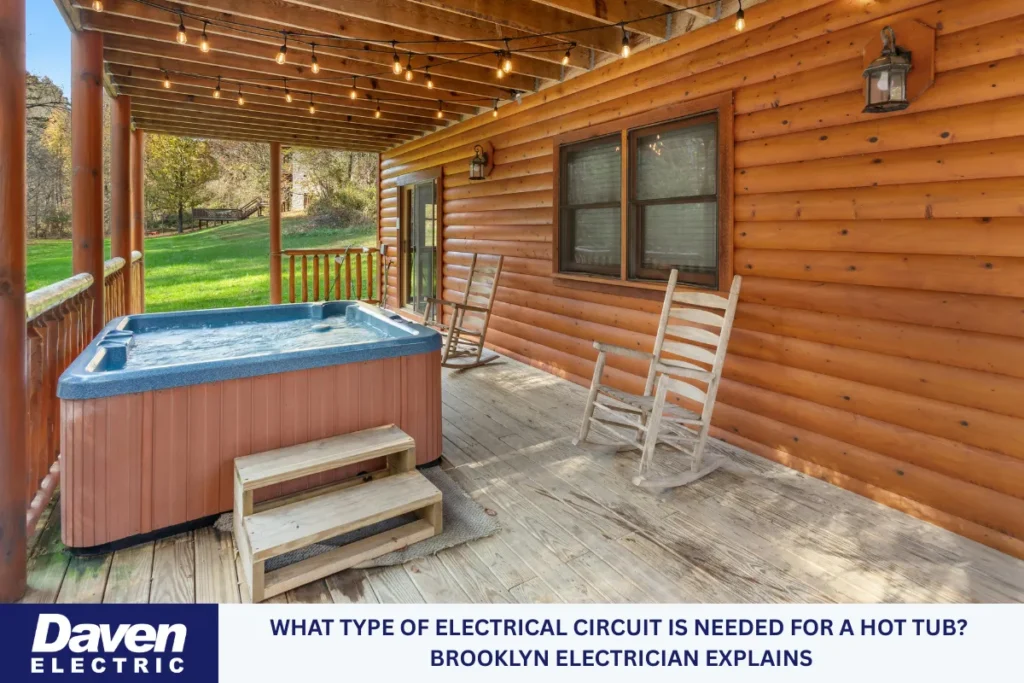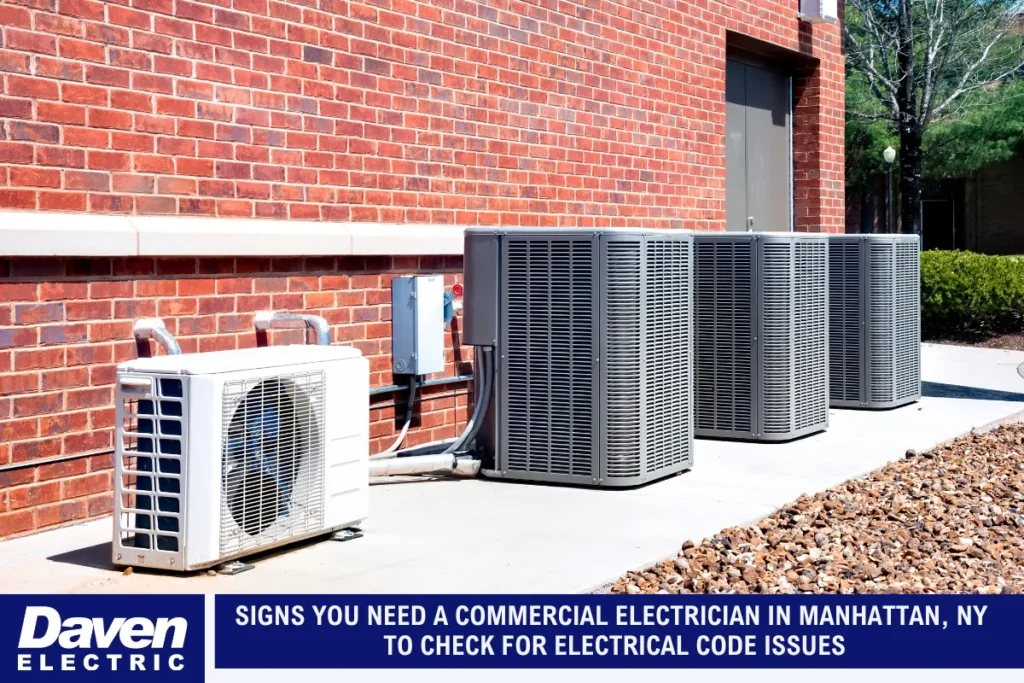Breaker problems are a common concern in commercial buildings, especially in high-demand environments such as Manhattan. From office towers to retail stores, these electrical issues can disrupt operations, impact productivity, and lead to costly downtime. Hiring a qualified commercial electrician is essential to accurately diagnose the issue and ensure your building’s electrical system remains safe, reliable, and compliant with local regulations.
In this article, we’ll take a deep dive into how commercial electricians in Manhattan handle breaker issues, step by step. We’ll also explore common causes, important tools, and why hiring a qualified professional is crucial to maintaining your building’s safety and operational integrity.
What Does a Commercial Electrician Do?
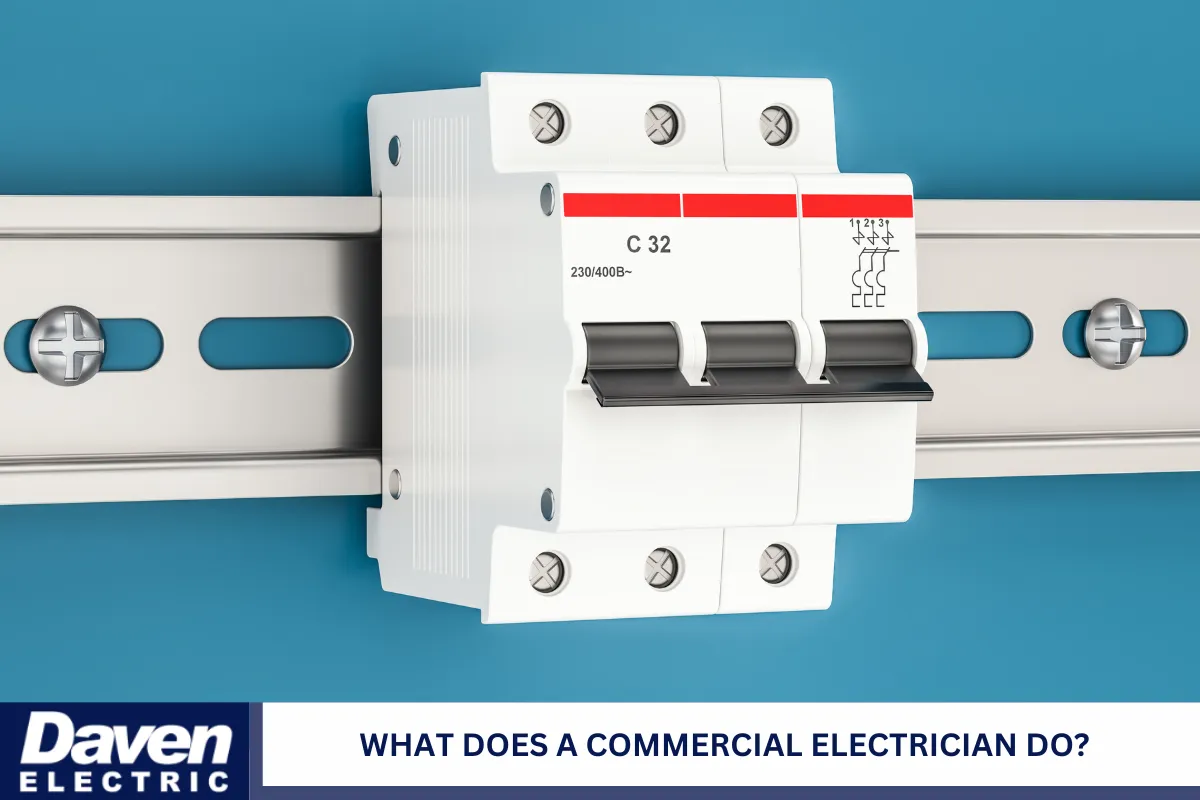
A commercial electrician is a licensed professional who installs, maintains, and repairs electrical systems in commercial buildings. Their job is more complex than that of a residential electrician because they deal with larger systems, higher voltages, and stricter safety regulations.
Key Responsibilities
- System Design: Designing efficient and safe layouts for lighting, wiring, and equipment.
- Installation: Installing everything from wiring and circuit breakers to lighting and data systems.
- Inspection and Compliance: Ensuring all systems comply with local codes and building regulations.
- Troubleshooting & Repair: Diagnosing problems like frequent breaker trips, short circuits, and power imbalances.
- Upgrades: Replacing outdated systems to handle modern power demands.
In Manhattan, with its dense construction and aging infrastructure, commercial electricians frequently encounter additional challenges, including limited access, outdated electrical panels, and shared power systems. They’re trained to work in these environments without disrupting business operations.
Understanding Breaker Problems in Commercial Properties
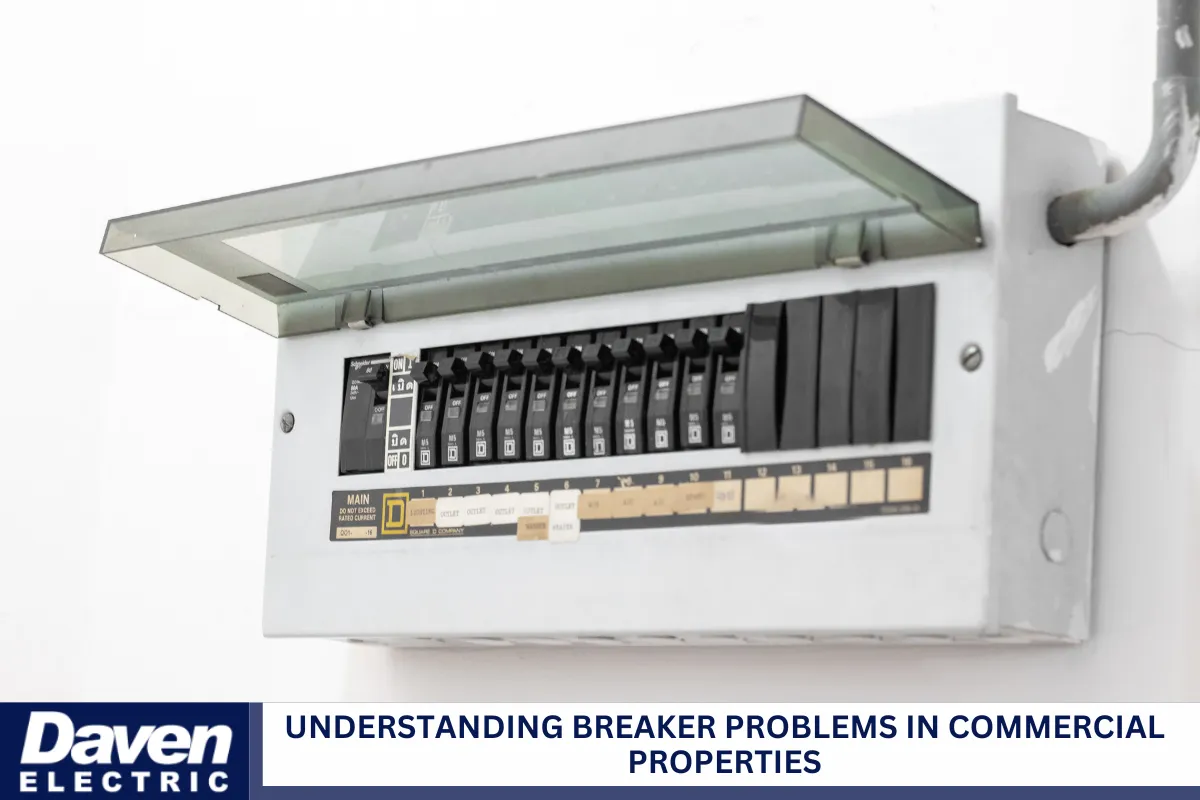
Before you can fix a breaker issue, you need to understand what causes it. In a commercial setting, the electrical load is often very high. Computers, printers, HVAC systems, elevators, lighting, security cameras—all running simultaneously. That’s a lot of pressure on your electrical system.
Common Breaker Issues
- Overloaded Circuits: When too many devices pull power from a single circuit, the breaker trips to prevent overheating or fire.
- Short Circuits: Occur when a hot wire touches another hot or neutral wire. This can cause a sudden surge in current, which the breaker must stop.
- Ground Faults: When electrical current escapes the intended path and flows into the ground. These are dangerous and often signal wire damage.
- Breaker Wear and Tear: Like any mechanical part, breakers can wear out over time, especially in older buildings in Manhattan.
- Faulty Wiring or Connections: Poor installation or aging wires can cause irregular current flow, leading to repeated breaker trips.
- Moisture Intrusion: Water from leaks or condensation can damage panels and wiring, especially in basements or rooftops.
These problems are not just annoying—they’re potentially dangerous. That’s why commercial electricians follow a thorough, multi-step process to diagnose and fix them properly.
Step-by-Step: How a Commercial Electrician Diagnoses Breaker Problems
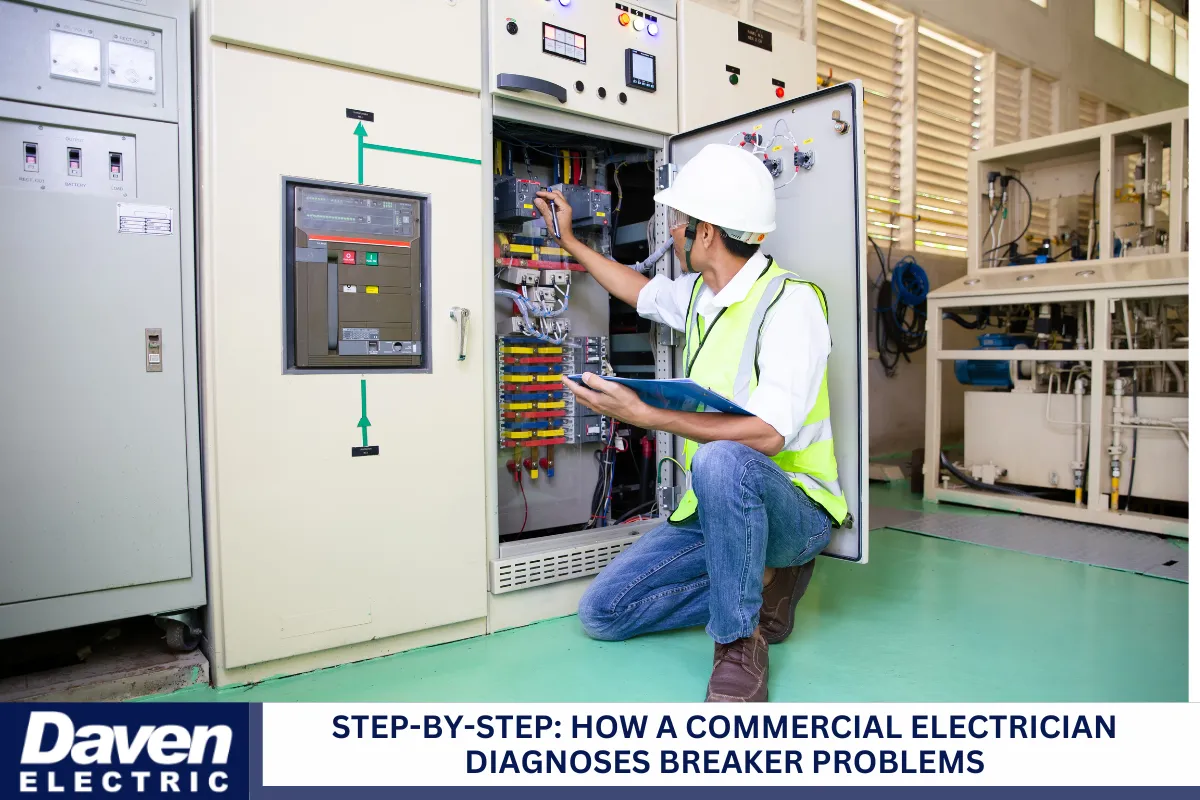
Manhattan properties vary from sleek modern towers to pre-war brick buildings. Each type comes with its electrical blueprint, so a commercial electrician’s diagnostic process must be both flexible and detailed.
Initial Safety Assessment
The first thing a commercial electrician does is assess safety. No one touches anything until it’s clear the area is secure. This includes:
- Turning off affected circuits
- Looking for signs of burning, sparks, or odd smells
- Checking for water damage near panels
- Inspecting the breaker panel for any visible damage or loose components
Manhattan buildings often have cramped utility spaces. Electricians need to navigate carefully to avoid triggering further issues or safety hazards.
Interviewing the Property Manager or Staff
This might seem basic, but it’s critical. The electrician will speak with whoever is responsible for building operations to gather context:
- When did the breaker issue start?
- How often does it occur?
- Is the problem limited to one area or affecting the entire building?
- Were any new devices or systems recently installed?
This information helps narrow down potential causes. For example, a recent upgrade to lighting or HVAC could overload existing circuits.
Load Evaluation and Power Demand Testing
At this stage, the electrician needs to determine the amount of electricity being used on each circuit. This is done using:
- Clamp Meters: Measure current flow without disconnecting wires.
- Power Analyzers: Track usage over time to detect spikes.
- Thermal Imaging Cameras: Reveal hot spots, which often indicate overloading or bad connections.
In Manhattan’s high-rise commercial buildings, each floor might run multiple circuits just for lighting and another set for computers. A commercial electrician will check all of them to determine whether the load is balanced or skewed.
Visual Inspection of Panels, Wires, and Equipment
Next comes a thorough visual inspection. The electrician will open up the electrical panel and inspect each breaker individually. They’ll look for:
- Corroded or burnt wires
- Loose terminals
- Frayed insulation
- Melted plastic
- Unusual smells
They’ll also inspect wiring that runs through ceilings, walls, and conduits—especially in older Manhattan buildings where outdated materials may still be in use.
Circuit Isolation Testing
If no obvious issue is found, electricians use isolation testing to narrow down the problem. This means:
- Turning on each circuit one by one
- Monitoring what happens when each is activated
- Checking if any specific appliance or system causes the breaker to trip
This step takes time but is extremely effective. It helps electricians identify whether the breaker is the issue or if the fault lies with a connected system or device.
Electrical Resistance and Ground Fault Testing
This is where things get technical, but a good commercial electrician keeps it simple for the client. They’ll test:
- Insulation resistance to ensure wires aren’t leaking current
- Grounding integrity to verify the electrical system has a safe path for current
- Breaker continuity to make sure the breaker itself isn’t damaged internally
In Manhattan, where building systems often share power sources, grounding is particularly important. Poor grounding can affect multiple units and pose serious fire risks.
Recommendations and Final Report
After diagnosing the issue, the electrician will offer solutions. These may include:
- Replacing one or more breakers
- Upgrading the entire breaker panel
- Redistributing power across different circuits
- Rewiring sections of the building
- Adding surge protectors or new grounding systems
They’ll also provide a detailed report outlining:
- What was found
- How it was tested
- What work was done or recommended
- Cost estimates for repairs or upgrades
Why Hiring a Licensed Commercial Electrician in Manhattan Matters
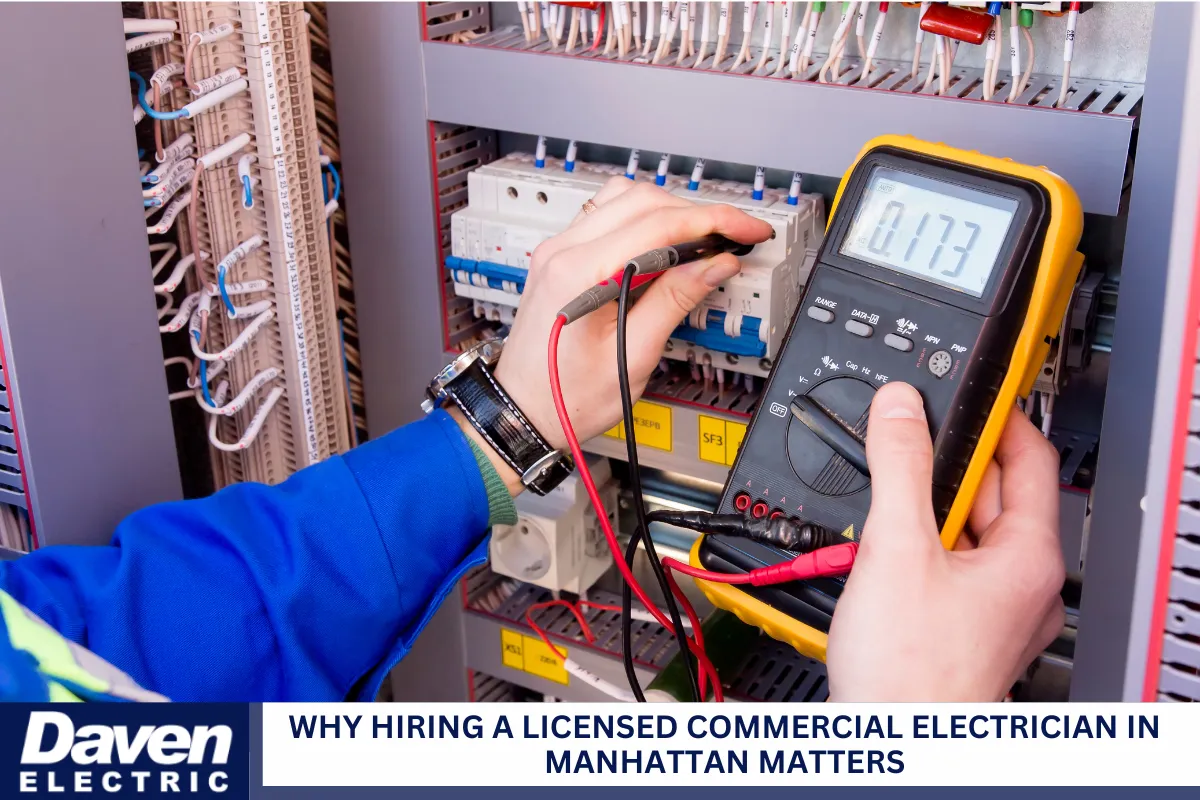
Hiring just anyone to poke around your breaker panel isn’t just risky—it’s illegal in many cases. Manhattan has strict electrical codes enforced by the Department of Buildings.
Here’s why using a licensed commercial electrician is non-negotiable:
- Safety: Incorrect wiring can cause fires, electrical shocks, or even more severe consequences.
- Code Compliance: Your building must meet all NYC electrical codes.
- Insurance Requirements: Unlicensed work can void insurance coverage.
- Proper Tools: Pros use tools you don’t find at home improvement stores.
- Warranty and Accountability: Licensed electricians stand behind their work.
Preventive Maintenance for Breaker Systems
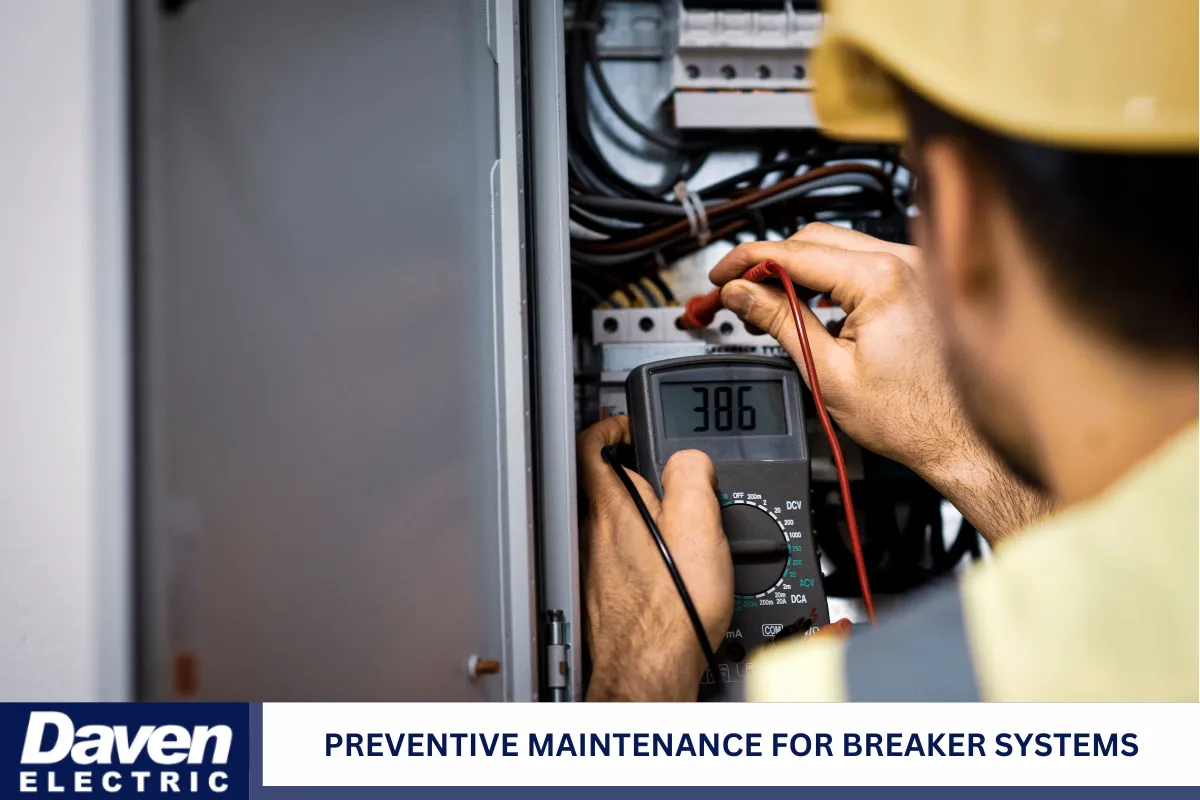
Solving a breaker issue is one thing—keeping it from coming back is another. Commercial electricians always recommend preventive steps to ensure system longevity.
Maintenance Tips
- Regular Panel Inspections: Every 6–12 months, have a professional check the breaker panel for early signs of wear or overheating.
- Load Balancing: Ensure heavy equipment isn’t concentrated on a single circuit.
- Upgrade Panels When Needed: Older panels may not be able to support modern demand and should be replaced before they become a hazard.
- Label Everything Clearly: Knowing which breaker controls what can save time and prevent mistakes in the event of future problems.
- Invest in surge protection, especially for tech-heavy buildings like offices or data centers.
Know the Signs of a Breaker Problem
You don’t need to be an electrician to spot the warning signs. Contact a professional immediately if you notice:
- Flickering lights
- Frequent breaker trips
- Breakers that won’t reset
- A burning smell near outlets or panels
- Outlets or switches that feel warm
- Buzzing sounds from the breaker panel
Final Thoughts: The Power of Prevention and Professionalism
Diagnosing breaker problems in Manhattan’s commercial properties takes more than just flipping a switch—it takes experience, the right tools, and a deep understanding of how complex electrical systems operate under high demand.
By working with a qualified commercial electrician, you’re not just fixing a current issue. You’re safeguarding your building, your equipment, and, most importantly, your people.
In a city that never sleeps, reliable electricity is a non-negotiable necessity. Make sure your systems are built to last and serviced by professionals who understand the ins and outs of Manhattan’s electrical infrastructure.
Manhattan Commercial Electrician – Daven Electric Corp
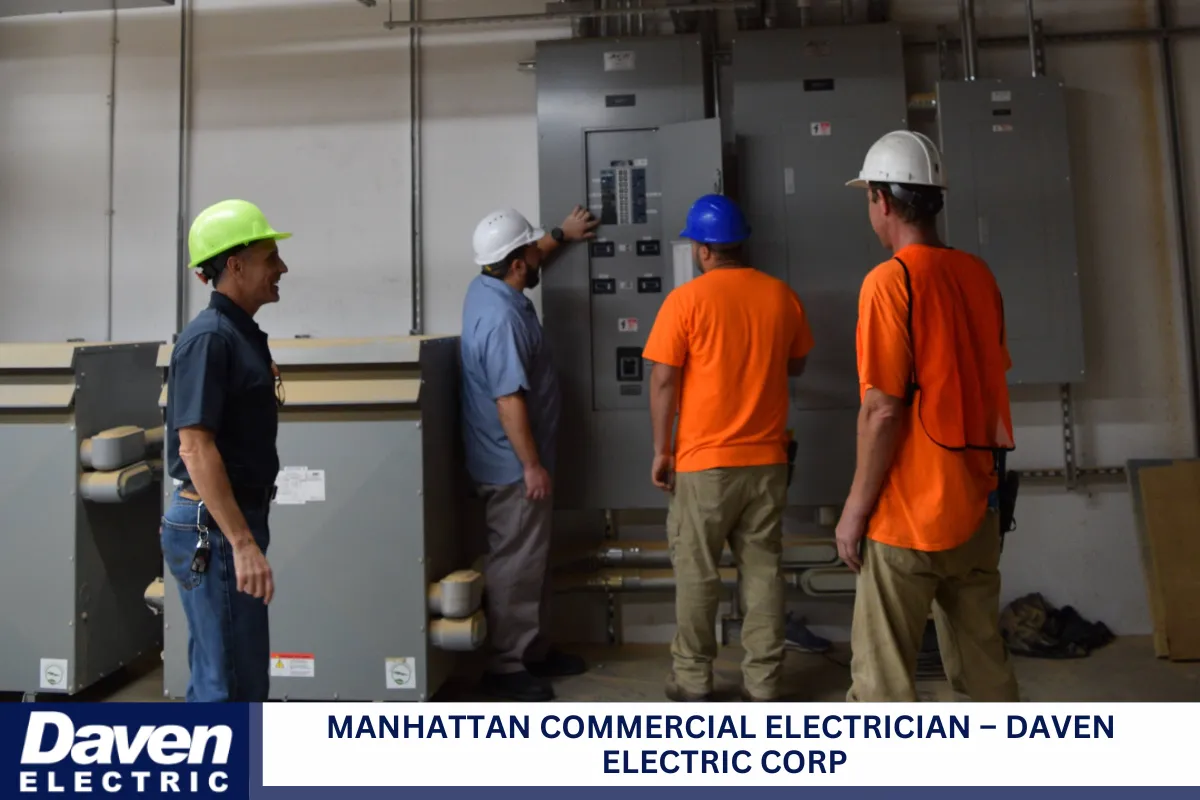
Need help with a stubborn breaker or an aging electrical panel in your commercial building? Trust Daven Electric Corp—your go-to commercial electrician in Manhattan. Our team handles everything from simple diagnostics to complex system upgrades, all while following strict NYC codes.
We specialize in electrical installation services for commercial, residential, and multi-unit properties. Whether it’s telecom, data systems, or high-load electrical projects, we’ve got the skills and tools to do it right.
Call us now at (718) 705-4531 to schedule a service or ask a question. We’re here to help power your business forward.
Frequently Asked Questions About Breaker Issues in Commercial Properties
1. What are the most common causes of a tripped circuit breaker in a commercial building?
A tripped circuit breaker in a commercial building is usually the result of an overloaded circuit, a short circuit, or faulty wiring. These are all serious electrical problems that shouldn’t be ignored. An overloaded circuit happens when too many devices draw power from a single line, exceeding the system’s electrical capacity. A short circuit is more dangerous, typically caused when a hot wire comes into contact with a neutral or ground wire, which can potentially result in a power outage or fire.
Other possible causes include:
- Grounding issues from improper installation
- Insulation damage in older buildings
- Aging or defective circuit breaker panels
- Outdated fuse boxes that can no longer handle modern loads
Professional electrical troubleshooting and electrical inspections are essential for diagnosing the true source of these problems. A licensed commercial electrician can determine whether the issue requires wiring repair, a breaker box upgrade, or preventive maintenance.
2. Why do I experience frequent flickering lights on my commercial property?
Flickering lights in a commercial property often indicate more serious electrical issues. While it might seem like a minor annoyance, it’s frequently a sign of a more serious electrical problem that needs prompt attention.
Some common causes include:
- Loose wiring connections or wiring damage
- Voltage fluctuations from high-power equipment
- A failing main breaker or fuse panel
- Inconsistent current from lighting systems pulling excessive load
In older buildings, faulty wiring or insulation damage can cause inconsistent airflow, leading to flickering lights throughout the property. Overloaded panels or breaker boxes that can’t handle increased electrical needs are also common culprits. Routine electrical inspections can help identify and address these hidden hazards.
To maintain electrical safety, it’s crucial to have these problems checked by a licensed professional. Proper wiring, troubleshooting, and possibly upgrading to energy-efficient lighting can not only fix flickering lights but also improve overall electrical performance.
3. What should I do during an electrical emergency in a commercial building?
During an electrical emergency in a commercial building, safety is the top priority. Common emergencies include power outages, sparking outlets, burning smells from the breaker box, or tripped circuit breakers that won’t reset. These issues can result from faulty wiring, a short circuit, or even an electrical fire risk.
Here’s what to do:
- Turn off the main breaker immediately if safe to access
- Evacuate the area if you notice smoke or burning smells
- Call a licensed commercial electrician right away
- Avoid using water near electrical components
- Don’t attempt repair work yourself
Always have emergency contact information readily available for professional commercial electrical repairs. Regular preventative maintenance and following electrical safety standards help reduce the risk of emergencies. It’s also smart to have a backup fuse box or a modern circuit breaker panel in place to better handle load changes and keep the building safe and functional.
4. How often should electrical inspections be done in commercial properties?
Regular electrical inspections are essential for maintaining the electrical system in any commercial building. Industry best practices and safety standards recommend full inspections at least once a year. However, high-demand properties may require more frequent checks.
Benefits of routine inspections include:
- Identifying hidden electrical issues like faulty wiring
- Detecting insulation damage or grounding issues
- Preventing overloaded circuits and future power outages
- Ensuring compliance with emissions standards and local building codes
An inspection typically includes:
- Reviewing the circuit breaker panel and main breaker
- Testing current flow through lighting and heavy equipment circuits
- Evaluating electrical capacity based on your usage
- Checking all wiring for wear, corrosion, or fire hazards
With proper inspection and preventative maintenance, your system will deliver better electrical performance and remain compliant with regulations. This also lowers the likelihood of needing costly electrical repair services down the line.
5. Can upgrading my breaker box help improve electrical performance?
Yes, upgrading your breaker box—especially in older commercial buildings—can significantly improve electrical performance and overall safety. Many properties in Manhattan still rely on outdated fuse panels or fuse boxes that were never designed to handle today’s electrical demands.
Reasons to upgrade include:
- Accommodating energy-efficient lighting systems
- Handling larger HVAC and server equipment
- Avoiding power outages from overloaded circuits
- Meeting updated safety standards
An upgrade often includes installing a modern circuit breaker panel with proper labeling and dedicated circuits for heavy appliances or specialized equipment. This makes electrical troubleshooting easier in the future and ensures compliance with local emissions standards and building codes.
It also improves your property’s ability to handle additional loads safely, which is critical if you’re expanding or renovating. A certified commercial electrician can assess your current electrical needs and recommend the right solution based on usage and projected growth. Read more: What Causes Breakers to Trip in Commercial Buildings? An Electrician in Manhattan Explains

